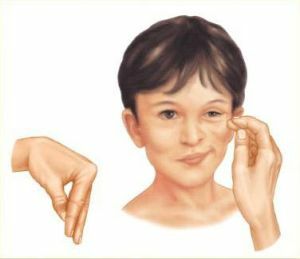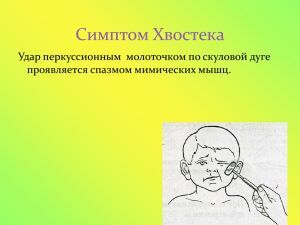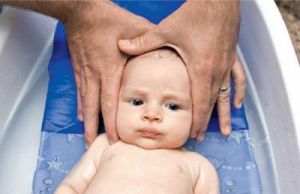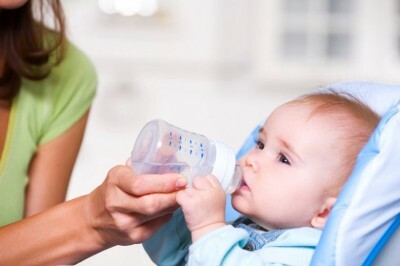 With its amusing sounding name, the symptom of Khvostek is due to Czech Austrian military physician-therapist Czech Frantisek Khvostek senior.
With its amusing sounding name, the symptom of Khvostek is due to Czech Austrian military physician-therapist Czech Frantisek Khvostek senior.
There is an opening of the symptom and co-author - the German neurologist Friedrich Schulze, hence the second name: the Khvostek-Schulze phenomenon.
The third name is a synonym, the syndrome is according to another author - a symptom-phenomenon of Weiss.
The essence of the symptom. ..
The syndrome of Khvostek is a sign of the presence in the body of either a neurological or general somatic disease, the expression of which is the excessive excitability of the nervous system.
It manifests itself as a forced-excruciating reaction of facial muscles to an insignificant effect on the tapping of a neuropathologist with a hammer to the area of the zygomatic arch. More precisely, in the zone of division of the facial nerve into its main branches.
. .. and its detection
If to describe the manifestation of the symptom in the sample in detail, then it is involuntary, rapid to the moment of contraction of facial
 muscles with a slight beating in the "goose paw" area, between the zygomatic arch and the corner of the mouth, anterior to the tragus of the ear.
muscles with a slight beating in the "goose paw" area, between the zygomatic arch and the corner of the mouth, anterior to the tragus of the ear. The phenomenon is considered positive already in the case of involuntary contraction of the musculature of the eyelid, with greater severity, the involvement of the upper lip and nose in the process of contraction of muscles, in the case of very deep pathology, a twitching of the entire involved half occurs.
With a significant degree of pathology development, even a neurologist's hammer is not required for a sample - just tapping with a finger.
In descending order: name Khvostek I, II, III
Depending on the degree of manifestation of the Khvostek syndrome, it manifests itself by such symptoms:
- with I degree of manifestation of the symptom( Khvostek I), twitching of the whole facial nerve stimulated by the facial musculature;
- with II - contraction refers to the musculature of the lips, the area of the nose and mouth;
- with III degree - easy, only see the contractions of muscles located in the corners of the mouth.
Diagnostic value of the symptom
It consists in the fact that this symptom helps to identify a number of neurological diseases:
- neurasthenia;
- hysteria;
- epilepsy;
- Bell's palsy;
- dyscirculatory encephalopathy with asthenic and asthenic-neurotic manifestations.
 But the trait has special value at suspicion on spasmophilia - children's tetany. This is the name of a condition with excessive neuromuscular excitability, caused by a violation in the body of calcium metabolism - a drop in the level of the content of this element in the blood and in the body in general, in the critical phase of its potentially life-threatening state.
But the trait has special value at suspicion on spasmophilia - children's tetany. This is the name of a condition with excessive neuromuscular excitability, caused by a violation in the body of calcium metabolism - a drop in the level of the content of this element in the blood and in the body in general, in the critical phase of its potentially life-threatening state.
Musculature in spasmophilia is characterized by hypertonicity with the development of carpopedic spasms, the formation of a "tetanic face";When involved in the process of the larynx, there is a real danger of developing laryngospasm.
Confirmation of the diagnosis is the presence of this symptom - most often Khvostek I - in children, especially in combination with the symptom of Tissot-breakdown, in which the compression of the shoulder-vascular bundle leads the hand to the position of the midwife's hand.
From general-somatic pathology, it is legal to consider the positive symptom of Khvostek as a sign:
- of tuberculosis;
- anemia;
- of moderate and complicated thyrotoxicosis.


